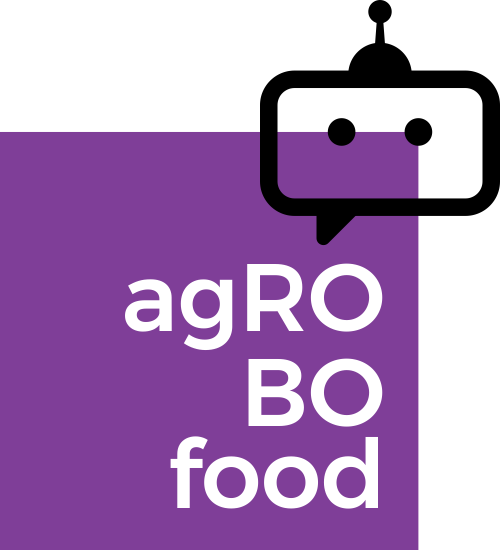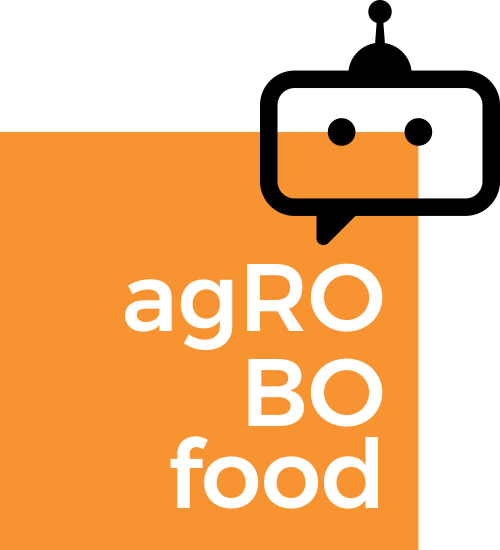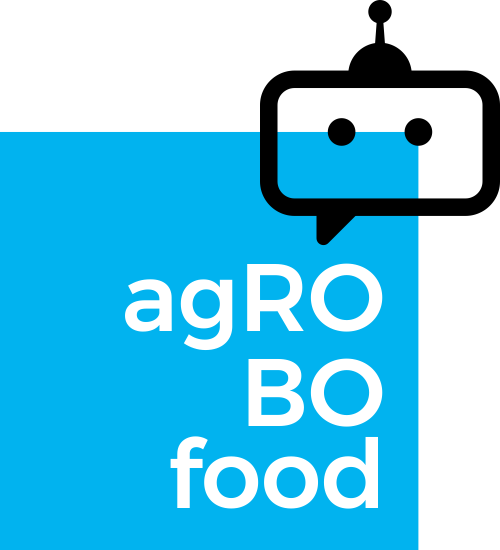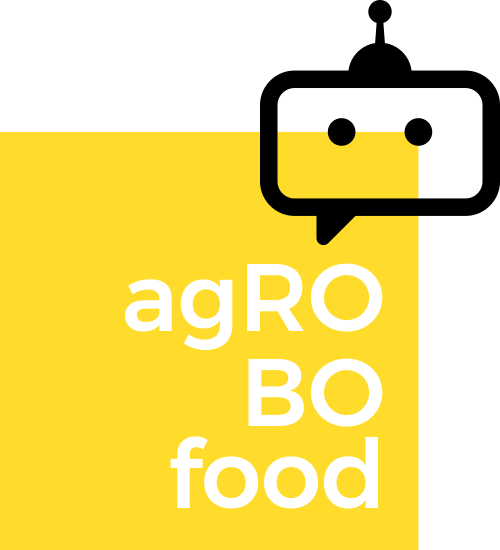The agROBOfood Project
The European Agri-Tech Robotic thought leaders and innovators are brought together to collaborate and set the foundations of modern agriculture in one place: the agROBOfood network. The aim of our network is to lower the barriers for agri-food companies to access and implement the newest robotic agricultural solutions.
Top-level agri-food professionals, scientists, mechanical engineers and business development experts explore new ways to connect, collaborate and push the boundaries to find sustainable solutions that solve the problems of modern agriculture. A unique and dynamic ecosystem, with multiple partners that is continuously growing and evolving. Our network is open to new members who want to accomplish new projects in robotics agriculture. Reach out to us!
Future-Proofing Robotic Innovations in Agri-Food: agROBOfood brings together stakeholders from the entire agri-food community to address the challenges in agriculture through the uptake of agri-food robotics. Intelligent robots help farmers improve, automate and optimize their processes, in every possible way.
What is unique about agROBOfood is the connectivity of the network’s members, across the European Union and the wide array of services provided by experts with extensive experience in the field.
Community of Experts: Digital Innovation Hubs (or DIHs) are one-stop shops supporting companies to respond to digital challenges and become more competitive. They offer a complete service portfolio that expands from business support and testing environments to technical support of market ready solutions and final market rollout.
Supporting Modern Agriculture: The niche market of agricultural robotics has been fragmented and developing rather slowly in Europe. To change that, the EU has created a state of the art, cutting-edge reference point; the agROBOfood network. Through this network, you can find support in the digitalisation journey of your business by accessing the unique community of experts, specialised in agrobots.
Labor shortage problems, agri-food production systems that are unstable and lagging behind, can be addressed by scaling robotic solutions in farming processes, exploring financing opportunities and implementing demand-driven innovations where and when needed.
Demand-Driven Innovation: The value of agri-food robotics is based on its ability to be tailored to the end-user’s needs. A new sustainable agri-food future is here, being built with human-robot collaboration. The agROBOfood network provides hands-on experience through cross-border experiments that are deployed in various innovation fields. These experiments further allow networking opportunities with experts across Europe and business expansion possibilities.
Growing Stronger Together: agROBOfood aims at stimulating growth by attracting and connecting new Digital Innovation Hubs and SMEs of the agri-food sector within its network. Building and expanding bridges among partners, creating more opportunities for collaboration and stimulating business growth are three ways of transitioning towards a stronger, sustainable and more sustainable agricultural production that utilises robotic technology.
The Future is Now: Attaining sustainability for the network is achieved through developing inclusive and adaptive business models that allow for sufficient revenue generation.The three levels of services create the right balance between innovation and sustainability and ensure the adoption of a stepwise approach that addresses the challenges and needs of the agri-food companies and actors involved.
Fields and Technologies
agROBOfood members, from DIHs to SMEs, are active in developing agri-robot technologies and products. But which are their main areas of focus?
Arable Crops, Horticultural Crops & Pastureland farming: Arable crop production refers to the systematic use of land to commercially grown plant crops. Arable crops refer explicitly to the production of cereals, oil crops, pulses, and root crops like potatoes and sugar beet. Horticultural Crops refers to the outdoor production of fruit, vegetables, grapes, olives and ornamentals. Pasturelands refer to the activities to manage land suitable for grazing by livestock. All these crops also come back in the concept of precision agriculture.
Greenhouse Crops: Greenhouse crops refer to the farming systems that make use of greenhouses to get more control of production circumstances. Crops include fruit, vegetables and ornamentals. The crops can be grown in the ground or above ground on growing benches in a sheltered construction that provides warmth andprotection.
Livestock & Aquaculture: Livestock farming is the commercial farming activity where production animals, such as cows, pigs, sheep, or chickens are raised and kept in an agricultural setting to produce diversified products for consumption such as meat, eggs, milk, fur, leather, and wool. Aquaculture refers to the controlled farming systems where fish are raised and kept, and to the ocean environment to produce and harvest fish, seaweed and shellfish. A new rising sector will be the farming systems to produce proteins from insects.
Post-harvest: In agriculture, postharvest handling is the stage of crop production immediately following harvest, including cooling, cleaning, sorting, and packing. These activities take place at the farms before they will be delivered.
Food Processing: Food processing is the transformation of agricultural products into food, or of one form of food into other forms. Food processing includes many forms of processing, from grinding grain to make raw flour to home cooking to complex industrial methods used to make convenience foods.
Logistics Transport & Retail: Logistics and transport of agri-food products impose a time constraint to scheduled production processes and are important to prevent the loss of products and/or damage to product quality. Retail is making the products available for purchase, both business-to-business and business-to-consumer.
Sensing: Sensing in agri-food refers to the methods of acquiring digital data and information from various processes, objects (e.g. plants, machines and animals) and their environments with the use of sensors; moreover, with the capability to add a timestamp and geo-reference.
Data Processing & Infrastructure: Data processing is the process of bringing data to a desired location so that it can be used, checking and safeguarding its quality, and transforming it into meaningful information for different users according the FAIR principles. Data processing can happen locally at the data collection machinery or remotely in a data process centre, and it connects different actors through its data infrastructure.
Data Interpretation & Visualisation: The information extracted through data processing comes to value when it is interpreted in the right context such that it can lead to decisions that can be performed by robots or humans. Modelling, visualisation and advanced decision rules (e.g. Artificial Intelligence) are used in this technology field leading to corrective or preventative actions towards a desired outcome. Such conversion is considered as interpretation of the data.
Robotic Manipulation & Handling: To replace physical actions that humans do not want to do, or cannot do because circumstances do not allow it, a robot has to perform specific manipulations and handlings. Many robotic solutions require grasping and moving of objects with robotic arms mounted on a platform. In this field multi-dimensional manipulation of platforms, arms and actuators is core. Also the interaction of robots (robot-to-x interaction) with their environment is part of this technology field.
Robot Navigation & Co-operation: Every automated or robotic solution that needs to move through space to perform an activity, needs to be capable of navigating through said space. The concept of environmental perception for movement is referred to as Navigation. Robot co-operation includes mission planning, manoeuvre planning and motion planning. Upcoming is the field of co-operative robots where robots and humans work together to perform tasks.
ELSA and Business Modelling: The design of robotic solutions needs to deliver trusted, safe end ethical robotic systems. To support market introduction it is also important to incorporate business modelling, market information (product and labour), ethical values, legal issues, societal aspects, and training and education into the innovation process.
ROBOTICS COMMUNITY FOR AGRICULTURAL GROWTH
Building a community of interconnected experts in agrobots requires strategic planning, resources and determination.
The agROBOfood network has successfully created a community of 92 DIHs, 60 SMEs and 75 agri-food researchers and mechanical engineers that provide expert support and infrastructure to companies that wish to transform their businesses and adopt robotic technologies.
The mission of agROBOfood is to boost the uptake of robotic technologies, by providing services in 3 different levels epending on the user and its needs.
The introduction of agri-food robotics will accelerate the transition to a sustainable and competitive European agricultural sector.
Regional Clusters
Contribution to regional development: One clear role of DIHs in many regions is to make support easier to find, by making the system more transparent and interconnected. For example, by offering one-stop shops where a DIH helps and guides an SME through the innovation support system.
Leading the digitisation of the industry: The agROBOfood network has created 7 Regional Clusters to facilitate the provision of services at a regional level. Several DIHs are connected to a cluster, and it is their role to lead the developments of robotic integration in agricultural environments. They organise actors to identify needs and opportunities and deliberate about industry needs. Discover the network’s regional clusters:







Deliverables
During the project’s deployment, research and experiments have been carried out in different innovation fields including irrigation, crop protection and food processing methods. Digital transformation through the implementation of automation and robotics is now a concrete reality.
agROBOfood has also developed a practical Repository of the deliverables that were submitted throughout the project.
Browse & explore the wealth of resources in the field of agricultural robotics.
